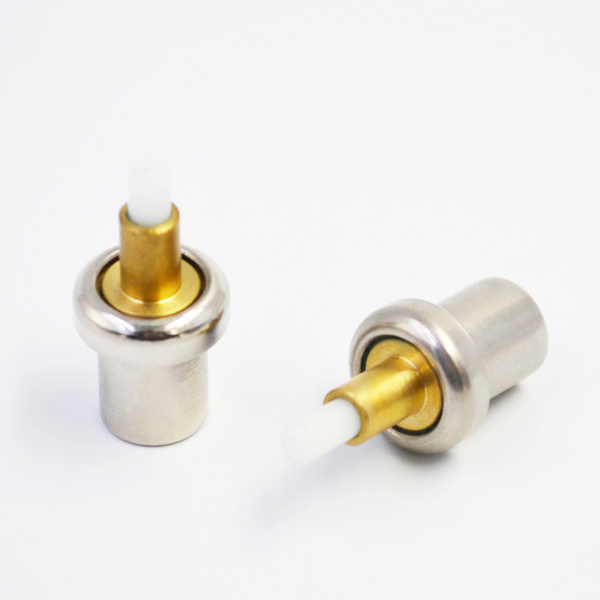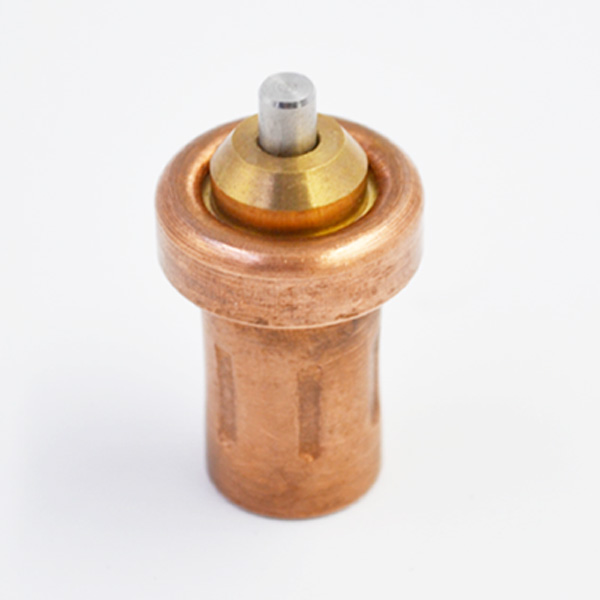In order to study the influence of different control algorithms on the system of networked control system, Simulink module and TrueTime toolbox in MATLAB are used to build the model of networked control system. When there is a certain time delay in networked control system, the model of networked control system using PID controller and the model of networked control using T-S fuzzy controller are built respectively. The output curve of the system is simulated and analyzed. The results show that the output curve of the system using T-S fuzzy controller has small overshoot, short adjustment time and fast stability. It shows that the control algorithm based on T-S fuzzy model can compensate the delay and improve the stability of the system. Sensors collect information from the controlled object, and send the collected and processed information to the controller through the communication network. The control signal obtained by the controller according to the control algorithm is sent to the actuator through the communication network. The actuator receives the control signal and acts on the controlled object. The closed-loop and distributed control system is called the network. Networked Control System (NCS). Li Jiandong [2] gives sufficient conditions for system stability and robust controllers based on linear matrix inequalities (LMIs). The effectiveness of T-S fuzzy controller for networked control systems is studied by numerical examples.

Hao Xinghua et al. [3] studied the networked control system with a certain packet loss rate based on T-S fuzzy controller, and designed a method to stabilize the T-S fuzzy controller. Gu Yanli et al. [4] first introduced the application of networked control system based on T-S fuzzy controller, then studied the robust control of networked control system based on T-S fuzzy controller, and finally summarized the stability and robust control of networked control system. However, there is no modeling, programming and simulation analysis for the networked control system based on T-S fuzzy controller. Firstly, the T-S fuzzy controller model is built and applied to the network control system model. Then the program of sensor part, controller part and actuator part is written.

Finally, the simulation results show that the control algorithm can effectively compensate the delay and improve the stability of the network control system. The relatively accurate mathematical model of the controlled object is established, and the general control theory is used to design the controller to realize the control of the system. But in practice, many systems are difficult to establish an accurate mathematical model. The mathematical model of the controlled object can not be established by using fuzzy control, which has the characteristics of non-linearity and time-varying of the controlled object.
Fixed adaptability, so as to achieve the control of the system. Because the dynamic characteristics of the controlled object are implicit in the input and output fuzzy sets and fuzzy rules of the fuzzy controller. The characteristic of T-S fuzzy controller is that the set of fuzzy variables is used in the front part of the control rule, and the output of the latter part is an accurate linear function, which is conducive to the systematic analysis and design of the controller. Because the output of the afterpart is a precise linear function, the T-S fuzzy PID controller realizes the local linear control of the input signal and the global non-linear control, so that the T-S fuzzy controller not only retains the advantages of the simple control method brought by the general PID controller, but also can be applied to the non-linear, time-varying and time-delay systems. The control proves that the fuzzy control has strong robustness.

Networked control system (NCS) is a control system that joins the network, which brings a series of problems, such as delay, data packet loss and so on. Because of the time-varying network speed and the current idle situation of the network, it is easy to cause large delay or even data packet loss to control the sending and receiving of data by using general PID control algorithm to set fixed P, I and D values.
T-S fuzzy control algorithm is used to control the network control system, and P, I and D are adjusted according to the current network communication situation. The value of D in order to send and receive data more quickly and accurately. Enter fuzzy in the Matlab command window and press the Enter key, then a FIS Editor interface defaulting to Mamdani will pop up. On the FIS Editor interface of Mamdani type, select menu commands File, NewFIS and Sugeno, then pop up the FIS Editor interface of Sugeno type, and establish the FIS Editor interface of Sugeno type fuzzy system. According to the requirements of the fuzzy controller in this subject, there are two input variables; so, select the menu command Edit, AddVariable, Input, then FIS becomes two-dimensional; select the menu File, Export, To File, save in the name of TS1. After completing the above operation, the interface of FIS Editor is shown in Figure 1. Ten linear functions are named mf1, mf2, thermostatic element mf3, mf4, mf5, mf6, mf7, mf8, mf9 and MF10 respectively.
The ten linear functions are set and edited according to the parameters of the fuzzy controller, and the fuzzy controller editor is obtained. After entering a rule and clicking Add rule, you can add a rule. The model of T-S fuzzy controller is shown in Fig. 2. T-S fuzzy controller consists of two parts. The first part is a parameter self-tuning fuzzy-PID controller which combines T-S fuzzy controller and PID control. Its main function is to process and adjust the three parameters of P, I and D of PID control through fuzzy reasoning to meet the different requirements of E and EC of networked control system for controller parameters.
The second part is composed of the real-time core module of the controller in the networked control system. Its main function is to receive the control signal processed by the fuzzy-PID controller at the Rcv port, and then transmit the signal to the networked control system module through the Snd terminal.

Using Simulink module library in MATLAB software and relevant modules in Truetime 1.5 toolbox, the networked control system model is constructed. The networked control system model based on PID controller is built as shown in Figure 3 and the output curve of the system is shown in Figure 5. The networked control system model based on T-S fuzzy controller is constructed as shown in Figure 4 and Figure 2. The T-S fuzzy controller is embedded into the controller in Fig.
5. The output curve of the system is shown in Fig. 6. Among them, the input signal is step signal, the network type is CSMA/AMP (CAN), the data transmission rate of the network is 80Kbits/s, the sampling period is h=0.01s, the interference is 0, and the delay is 0.011s. The parameters of the PID controller are K=1, TD=0.04. The parameters of the T-S fuzzy controller are set in the fuzzy rules. As can be seen from Fig. 5 and Fig. 6, when the delay is 0.011s, the output curve of the system using general PID controller has been discrete and lost stability, while the system using T-S fuzzy PID controller tends to be stable and overshoot is small after two oscillations. The adjustment time used is only 0.2s.

It can be seen from this that the system using T-S fuzzy controller is stable. The control algorithm of the model can effectively compensate the delay and improve the stability of the system. From the point of view of different control strategies, this paper establishes the model of networked control system based on PID controller and the model of networked control system based on T-S fuzzy controller. The two models set the same type of control network, the rate of data transmission and the network delay. The simulation results show that the control based on T-S fuzzy model is effective. The control effect of the algorithm is good and the robustness is strong.
